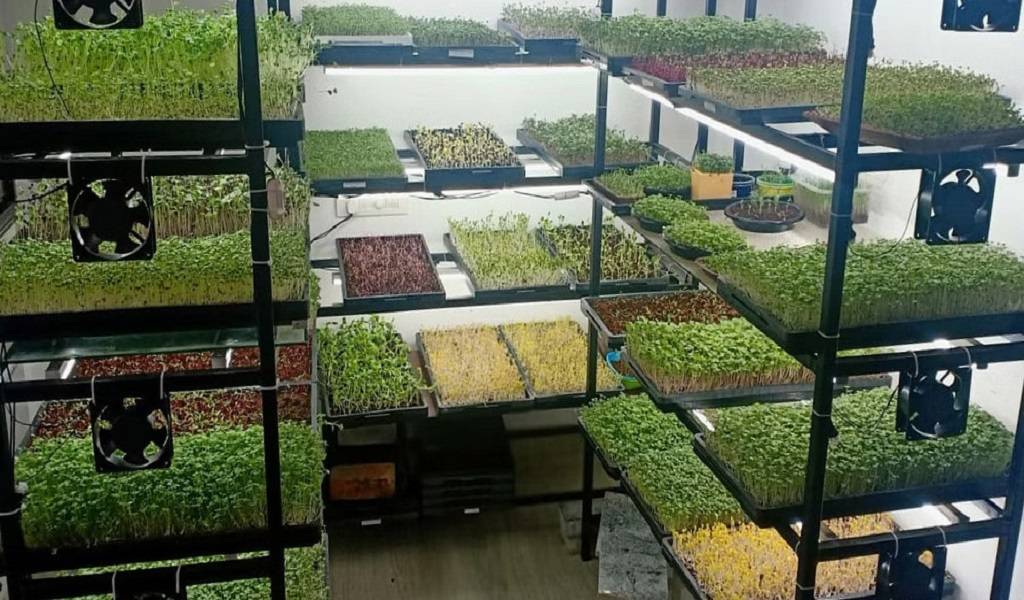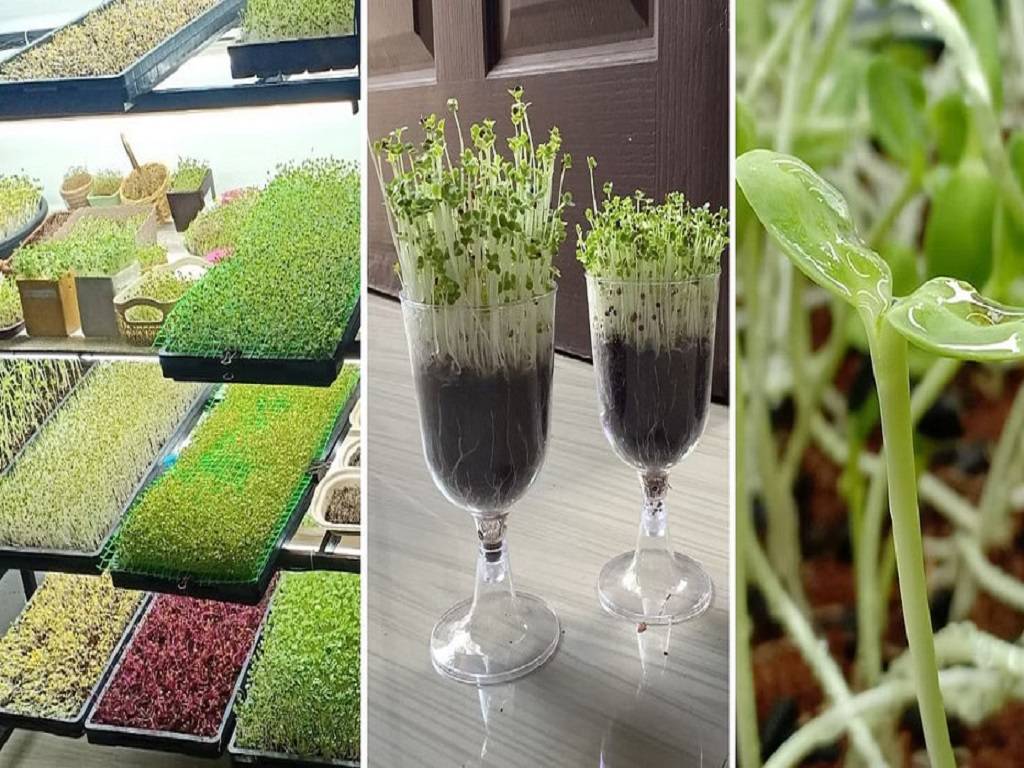
Nutrient-dense microgreens are frequently referred to as superfoods. These are young, growing vegetables or herbs that are in fact more nutrient-dense than fully developed vegetables.
Ajay Gopinath, a former bank employee, was unaware of all of this until he discovered the little greens on his plate while eating at a Bengaluru restaurant. He started looking into what these were out of curiosity and discovered that they were not just a food garnishing ingredient but also highly nutritious.
Later, when Ajay left his banking job to return to his hometown of Kochi, he decided to give microgreen farming a shot.
"Roughly around 2017 or 2018, I began growing them on a limited scale for research purposes. After two years of study and testing, I was able to figure it out even though I wasn't certain of the proper procedures. Then I began cultivating them commercially," the 50-year-old claims.
Currently, in a room that is 80 square feet, Ajay grows about 15 different kinds of microgreens. He harvests about 5 kg of greens each day, and his monthly sales range from Rs 2 to Rs 3 lakh.
A Profitable Business
Ajay began his microgreens journey by watching YouTube videos. "I tried using tissue papers to cultivate microgreens from the green gram. However, the outcome fell short of my expectations. This led me to realize that most videos were fake and did not show how to grow microgreens properly," he says.
He searched for a suitable method. He made contact with a microgreens specialist in the UK through a friend who lives there. “He taught me about growing microgreens because he was a farmer. Not all seeds can grow into microgreens, he informed me. These are the only Non-Genetically Modified Organism (GMO), non-hybrid, treated, and open-pollinated seeds available.”

Ajay realized after talking to him that there was a lot more to growing microgreens than what he had read about online. He started obtaining seeds from Chattisgarh, Pune, and Bengaluru. "The seeds cost about Rs 600 per kg to purchase. Even if it is pricey, the yield might result in a return of three times the cost of the seeds,” he notes.
It took him almost two years to develop a practical technique for cultivating the greens in controlled situations within his home.
"I only had two trays of microgreens when I first started, and I never intended to go commercial. But when I gave them to my friends, they were really well appreciated. The flavor and quality pleased them all. That's when I realized it might be a successful business," recalls Ajay, who turned it into a business in 2020.
He's been growing microgreens for about three years and has experimented with about 30 different kinds. “The world today offers over 150 different forms of microgreens, of which I am currently cultivating 15 different kinds,” he continues.
Radish varieties including sango purple, china rose, red, and white, green mustard, yellow American mustard, beet, bok choy, corn, sunflower, etc. are some of the varieties he raises at home. He claims that the most popular varieties are mustard, sunflower, and radish, and also said that sunflower and mustard microgreens are the healthiest of the lot.
How to grow microgreens?
In his Chittoor home's bedroom, Ajay cultivates microgreens. The space is 80 square feet in size, and it is always kept between 40 and 60 percent humid and below 25 degrees. Low EC cocopeat media is one of the best growing mediums for high-quality microgreens, according to Ajay, who plants them in the same cocopeat medium within food-grade trays with holes.
Following the seed distribution onto the medium, the containers are sealed and kept in a well-ventilated area with low lighting. When they germinate after two days, they are kept open under specific lighting conditions to ensure healthy growth.
According to him, the seeds need around seven days to develop into microgreens, which have a short stem and two leaves. The cotyledon leaves must be collected as soon as they appear by cutting above the roots.
Only the stems and leaves of microgreens should be eaten, and only in raw form, as per Ajay. "The question of whether it needs to be cooked is often unclear. However, doing so would reduce their nutritional value, thus they shouldn't. They can be eaten on their own or combined with other foods, like salads, but are best utilized as a nutritious supplement,” he says.

Ajay sells his daily harvest of 5 kg of microgreens, which he sells in bulk and for Rs 150 per 100 g, under the trade name Grow Greens. Additionally, he owns franchises throughout Bengaluru and Chennai as well as all of Kerala.
"Right now, I'm delivering them to about 20 to 25 different kinds of customers, such as hotels, gyms, and hospitals, among others. Even renowned people purchase greens from me,” he continues.
He claims, “Microgreens of a vegetable or plant hold far more nutrients than a full-grown plant. For instance, 25 mg of red-cabbage microgreens are just as nutrient-dense as 1 kg of red cabbage.”
According to studies, they are a good source of nutrients like vitamin C, vitamin K, vitamin B12, and others. Minerals including potassium, iron, zinc, magnesium, and copper are abundant in the majority of greens. Additionally, they include several antioxidants.
Ajay said, “People still don't fully understand the potential of microgreens. They are frequently regarded as high-end ingredients found only in five-star establishments. But people need to realize that nurturing them is neither expensive nor difficult. To improve the availability of microgreens and raise public awareness of their health benefits, more people need to start microgreen cultivation.”
















